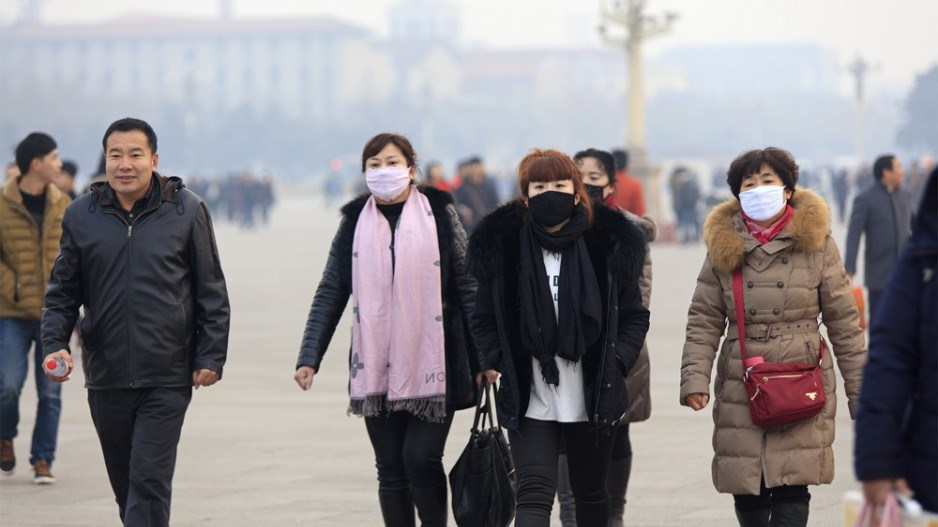China’s notorious smog problem may have been worsened by climate change in the polar regions, according to a study published in the United States on Wednesday.
According to the study published in the US journal Science Advances, the findings may provide some clues why China’s smog problem has failed to ease despite cuts in pollution-causing emissions.
When analysing the impact of global warming on regional pollution, researchers from Georgia Institute of Technology found that the level of hazardous PM2.5 particles over Beijing and other cities in the east China plain in the winter of 2013, the worst smog in more than five decades, followed record melting of sea ice in the Arctic and record high snowfall in the upper latitudes of the Eurasian continent.
Computer simulations suggest connections between these events. Melting ice around the North Pole and increasing snowfall in Siberia reduced the amount of cold air, impeded its southerly route and contributed to China’s severe air pollution, according to the researchers.
“The reductions in sea ice and increase in snowfall have the effect of damping the climatological pressure ridge structure over China,” said Professor Yuhang Wang, the lead scientist of the report and a researcher at the Georgia Tech’s School of Earth and Atmospheric Sciences.
“That flattens the temperature and pressure gradients and moves the East Asian Winter Monsoon to the east, decreasing wind speed and creating an atmospheric circulation that makes the air in China more stagnant,” he added.
The same weather was repeated earlier this year, with Beijing and many cities in north China suffering severe winter haze. Low levels of sea ice were recorded in September in the Arctic which was followed by heavy snow in Siberia, both caused by rising average temperatures worldwide.
China has launched what the central government called a “war on smog” costing an estimated one trillion yuan (HK$1.13 trillion) and involving such measures such as collecting sulphurous dust from coal chimneys, removing 20 per cent of vehicles on city streets, burning natural gas for winter heating and relocating polluting factories to remote areas.
However, these efforts might be in vain, or be more time consuming and expensive than previously thought, because of global climate change, according to the researchers.
“Despite the efforts to reduce emissions, we think that the haze will probably continue in the future. It is partly climate-driven now, so it probably won’t get much better in winter. Emissions are no longer the only driver of these conditions,” Wang said.
The Georgia Tech team was not the first to link Artic sea ice to the smog in China. Another team of researchers led by professor Wang Huijun, director of Chinese Academy of Sciences’ Institute of Atmospheric Physics (IAP) in Beijing, proposed a similar conclusion in 2014 after examining the changes of polar ice and haze events in China.
“It may not be a politically correct thing to say, but I am afraid most money spent on smog reduction will produce no effect if Mother Nature does not cooperate,” said a researcher involved in the IAP study, who requested not to be named due to the sensitivity of the topic.
But the money must be spent and some efforts must be made, “otherwise people will lose faith and hope in the country,” the researcher added.
Zhang Yaocun, a professor at the school of atmospheric sciences at Nanjing University, said it was too early to blame China’s smog on polar ice levels.
“China and the Arctic is separated by great distance, and the sophisticated mechanism between the interactions of different circulation systems cannot be explained fully by such a simple theory,” he said.
“The tale of smog and Arctic ice has prompted heated debate. The majority of the research community remains in doubt,” Zhang added.
Read the original article on the South China Morning Post.




